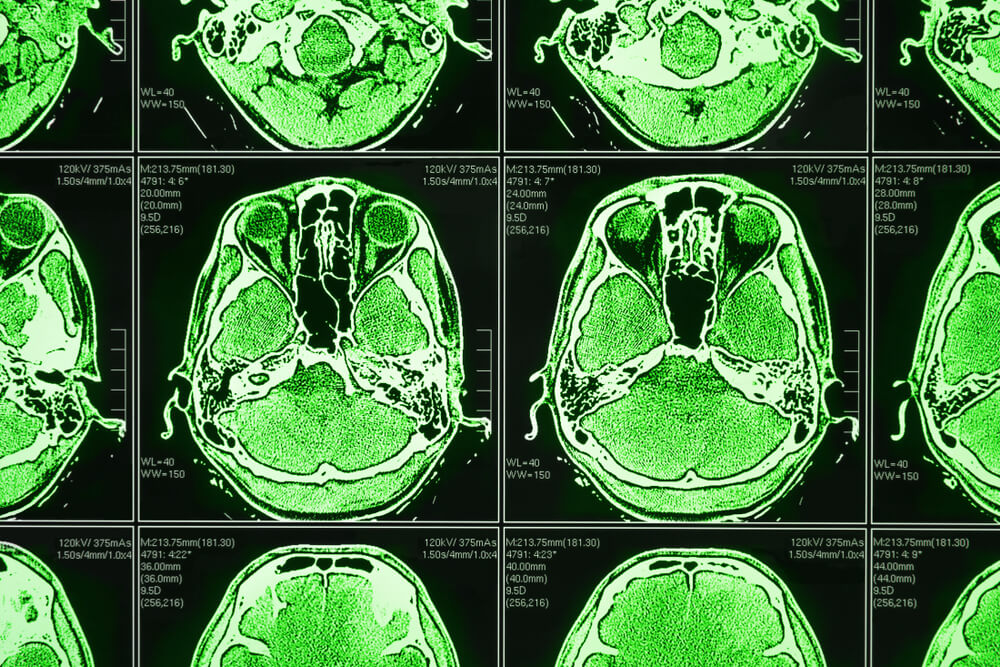Medical imaging’s ever-advancing landscape remains pivotal in contemporary diagnostics. Within this intricate tapestry of technology, optical filters play a pivotal role, driving precision and fostering clarity in captured images. Optical filters have the ability to improve the accuracy of diagnostics by enhancing the two most important aspects of medical imaging: contrast and resolution. As we navigate the nuances of these optical components, we uncover their significance in the medical industry.
Key Takeaways:
- Pivotal Role of Optical Filters: Within the intricate realm of medical imaging, optical filters are indispensable, significantly influencing the clarity and precision of captured images.
- Precision & Reliability: Beyond mere benchmarks, the exacting standards of optical filters ensure that every critical detail in a medical image is captured, providing consistent and trustworthy results for practitioners.
- Application Across Modalities: From X-rays and radiography to fluorescence microscopy, optical filters are instrumental in refining and enhancing image quality, allowing for accurate diagnoses and revealing even the most subtle of anomalies.
- Enhancing Contrast and Resolution: Optical filters drastically elevate both contrast (distinguishing light intensity) and resolution (differentiating between closely spaced objects) in medical images. This enhancement reveals minute details, often crucial for early diagnosis and effective treatment.
- Future Trends: As medical imaging technology evolves, next-generation optical filters will be at the forefront, with innovations promising to expand diagnostic capabilities and counteract emerging challenges.
The Science Behind Optical Filters
Basics of Optical Filters
At their core, optical filters are specialized mediums that modulate light’s spectrum. By permitting or obstructing specific wavelengths, these filters can fine-tune the light’s properties. Diverse types such as bandpass filters, neutral density filters, and short-pass filters cater to varied imaging requirements, each engineered with exacting standards to serve distinct purposes.
The Importance of Precision and Reliability
Precision in optical components transcends being a mere benchmark—it’s a non-negotiable. Every minute detail in a medical image could be diagnostic gold, and precision ensures no such details go amiss. Reliability, on the other hand, manifests as unwavering consistency in performance—a beacon of trust in critical medical diagnostics.
It’s therefore absolutely critical that the components being used are of the highest quality and precision in order to help enhance performance.
Enhancing Contrast and Resolution in Medical Imaging
There are two main ways in which optical filters can improve the performance of medical imaging, resolution and contrast. Contrast and resolution remain the lynchpins of medical image quality.
Contrast, in essence, is the difference in light intensity between the object and its surroundings. Optical filters augment contrast by isolating specific wavelengths, thus highlighting specific tissues or structures. For instance, in fluorescence imaging, filters selectively allow fluorescent signals while obstructing ambient light, yielding images with stark contrast.

Resolution, the ability to distinguish between closely spaced objects, is equally critical. Filters play an implicit role here. By eliminating stray light or wavelengths that might blur or overlap, optical filters ensure the image’s distinctness. Enhanced resolution, particularly at a microscopic level, has the power to reveal cellular or even molecular details—crucial in pathology or research.
Together, these enhanced facets of imaging can illuminate pathologies in their nascent stages or highlight nuances that could drastically alter therapeutic decisions.
Precise optical filters allow these two facets to work to improve medical applications and push technology and diagnostics forward for even better healthcare.
What medical applications are filters being used for already?
Optical Filters in Various Medical Imaging Modalities
X-rays and Radiography
X-rays, being high-energy photons, are adept at penetrating human tissue but are variably absorbed, depending on tissue density. Here’s where optical filters come into play:
- Beam Hardening Filters: These filters, often made of materials like aluminum or copper, are placed between the X-ray tube and the patient. Their function is to filter out lower energy X-rays, ensuring a more uniform beam that reduces artifacts and increases contrast. For example, in mammography, beam hardening filters allow for clearer images of dense breast tissue, aiding in the early detection of tumors.
- Anti-scatter Grids: These are not filters in the traditional sense but play a similar role. They consist of a series of narrow lead strips designed to allow X-rays to pass through in a specific direction, thereby reducing scatter. This is especially useful in chest radiography where scattered radiation can obscure critical details.
Fluorescence Microscopy
This imaging technique illuminates specimens with a specific wavelength of light, causing them to emit light of a different wavelength in response. Filters become paramount here:
- Excitation Filters: These filters allow only the desired wavelength of light to illuminate the specimen, ensuring specificity. For example, when observing a sample tagged with a green fluorescent protein (GFP), an excitation filter might allow only blue light to pass through.
- Emission Filters: After the specimen emits light in response, these filters isolate the emitted fluorescence from unwanted wavelengths. Following the previous example, an emission filter would allow only green light (from the GFP) to reach the detector.
- Dichroic Mirrors or Beamsplitters: Positioned at an angle to the light path, these components reflect the excitation light towards the specimen and transmit the emitted fluorescence to the detector. They serve as the bridge between excitation and emission filters.
Optical Coherence Tomography (OCT)
OCT captures high-resolution cross-sectional images of biological tissues. It does so by measuring the echo time delays of backscattered light. Optical filters play an essential role:
- Bandpass Filters: Used in the detection arm of OCT systems, these filters ensure only the light frequencies of interest are detected, significantly improving image contrast. They eliminate unwanted signals and background noise.
- Tunable Filters: In some advanced OCT setups, tunable filters are employed to adjust the depth of imaging or to capture images at multiple depths sequentially. This flexibility allows for comprehensive tissue analysis.
Positron Emission Tomography (PET)
While primarily a nuclear medicine imaging technique, PET scanners often integrate optical systems for improved data acquisition:
- Interference Filters: These filters are used to discriminate between different types of emitted radiation. For instance, they can allow for the passage of Cherenkov light (a byproduct of radiation) while blocking other ambient light, aiding in enhanced PET imaging.

The Future of Medical Imaging and Optical Filters
Medical imaging has experienced groundbreaking advancements in the past few decades, and with the integration of optical filters, the horizon looks even brighter. As we progress, here’s what we can anticipate:
Technological Advancements on the Horizon
- Ultra-Narrow Bandpass Filters: The development of ultra-narrow bandpass filters is expected to usher in an era of extraordinary specificity. With the ability to isolate exceedingly specific wavelengths, these filters will allow clinicians to detect the minutest changes in tissues, potentially aiding in the identification of diseases at their very nascent stages.
- Advanced Infrared Filters: With the medical industry showing increasing interest in the infrared spectrum, particularly for its non-invasive imaging capabilities, advancements in IR filters will be pivotal. These filters will pave the way for deeper tissue imaging, offering insights that were previously elusive.
- Integrating AI with Optical Filtering: As artificial intelligence continues to make strides in healthcare, its synergy with optical filters is inevitable. AI-driven algorithms might soon dictate the optimal filter configurations in real-time, tailoring the imaging process for each individual patient and scenario.
Challenges and Solutions
- Adapting to New Imaging Techniques: As imaging techniques grow more diverse and sophisticated, optical filters will need to evolve in tandem. This will mean developing filters with previously unheard-of specifications or ones adaptable to a variety of imaging conditions.
- Reducing Cost while Maintaining Quality: As healthcare moves towards more decentralized and accessible models, the demand for cost-effective imaging solutions will rise. This will challenge the industry to produce high-quality optical filters at a more affordable price point without compromising their efficacy.
- Addressing Light Pollution and Interference: In our increasingly connected world, electromagnetic and optical interference is a growing concern. Future optical filters will need to be adept at isolating desired signals even in environments rife with potential disturbances.
Optical Filters for Medical Applications
In the grand tapestry of medical diagnostics, optical filters may seem inconspicuous. Yet, their intrinsic value is undeniable. As we stand on the cusp of revolutionary medical breakthroughs, the harmonization of quality, precision, and reliability in optical components becomes not a mere desideratum but an imperative. Their silent, steadfast contributions to medical imaging affirm their indelible mark on the annals of medical evolution.
Contact our team today for information and enquiries about any stock or custom requirements for your project.




